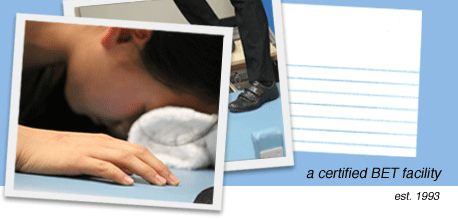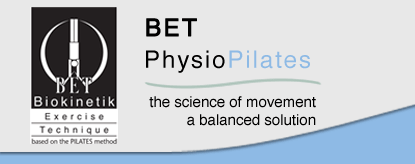|  |
As a Certified BET PhysioPilates facility we are committed to quality control and to evidence based practice. As a routine part of our clinical care we collect objective data on assessment and discharge that assists us in measuring the efficiency and effectiveness of our treatment.This data is collated and analysed statistically with the data from other certified facilities so that we can continuously improve on the BET PhysioPilates system. |
We follow a physiotherapy assessment that targets the examination of posture, muscle and movement function. Questions about the history and nature of the current complaint will be followed by a physical examination to evaluate muscle balance and the quality of simple movements. From the assessment, the physiotherapist is able to determine if biomechanical or muscle control problems are contributing to pain or other symptoms. |
As a routine part of our clinical care, patients are required to complete one or more ‘self-report’ questionnaires to determine the level of current pain and functional disability. The same questionnaires are completed towards the completion of treatment to measure for changes in pain intensity or the extent of disability. |
The self - report questionnaires are collated for different diagnostic categories. The collated data is analysed statistically and the results are utilised to monitor the effectiveness of our treatments. Over the past 20 years analysis has supported the effectiveness of the BET PhysioPilates system in the treatment of various conditions, particularly back and neck pain. |
Rochenda was principal investigator for an independent formal research study run through collaboration with Queens University, Canada and The Hong Kong Polytechnic University, Hong Kong.
The results of Rochendas study are presented in the graphs below:
|



